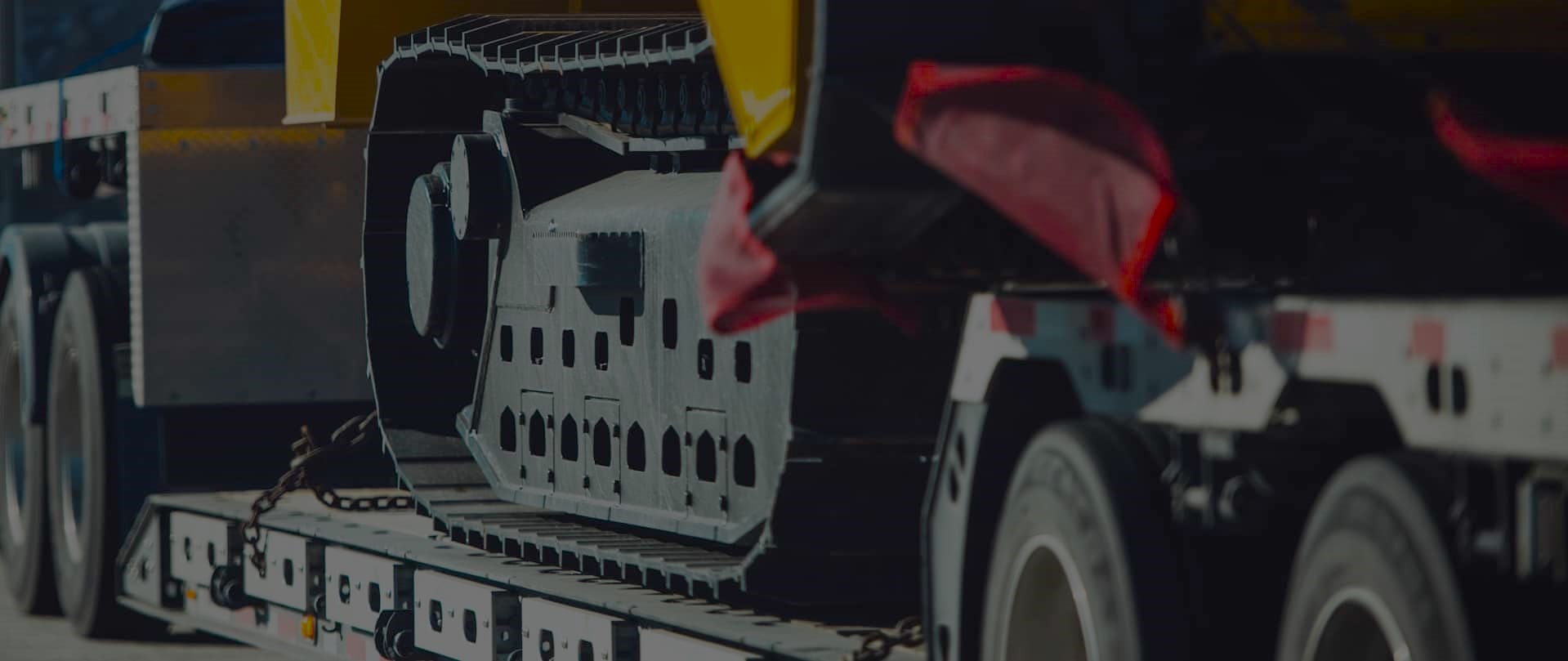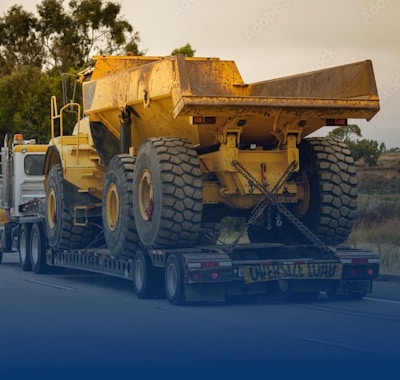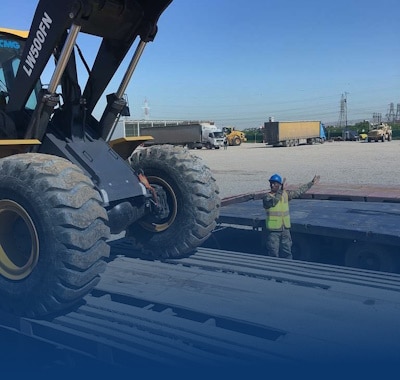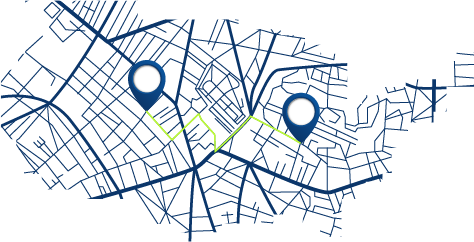Western Interstate Closures Affect Oversize Freight Movement
Freedom Heavy Haul can offer expedited Pickup and Delivery for any size shipment anywhere in the USA. Contact us today for No Hassle, No Pressure Pricing.
This guide explains in plain terms what carriers and shippers face when major lanes shut down. You will learn practical route planning tips for heavy haul runs and see how fewer open lanes create new risks for equipment and cargo.
We cover real-world steps for pre-trip planning, permit checks, and day-of adjustments that keep shipments on schedule. Simple practices in dispatch and monitoring help reduce delays and protect crews.
Expect clear checklists and friendly advice on staging, staging choices, and when to roll to lower risk. The section links route selection to permits, escorts, and supply chain decisions so your team can act fast.
Throughout, we show how to layer routes, set realistic time buffers, and use partners and tools to turn surprise events into predictable routines. Use these ideas to keep transport smooth and delivery promises intact.
Why closures across the Western states disrupt oversize and overweight freight today
Stacked hazards — snow, wildfire smoke, rockslides, long projects — make route choice critical for heavy haul. Carriers face rapid lane shifts that push large vehicles onto narrower detours with tighter turns and smaller shoulders.
From weather to wildfires to work zones: what triggers a closure
Storms, smoke, debris, and extended construction are common triggers. A single event can shut a corridor for hours or days.
That uncertainty raises traffic and scheduling risk for loads that need steady corridors and daylight windows. Even seasonal patterns matter when planning moves.
Unique risks for heavy haul, oversized loads, and bridge-restricted corridors
Weight, width, and height limits often block alternate routes. Key bridges may have lower ratings or partial lanes, forcing long detours.
- Different state permits and curfews can require new escort rules mid-route.
- Narrow alternates increase need for pilot cars, staging, and extra equipment checks.
- Tight axle or gross weight limits may force last-minute permit changes.
“Plan routes with backup corridors, confirm permits, and stage before pinch points.”
How Western interstate closures impact oversize freight flow
Lane reductions and detours turn predictable runs into variable journeys that add minutes and costs. When lanes drop out, bottlenecks form fast and slowdowns spread beyond the closure point.
Lane losses, detours, and bottlenecks: translating closures into time and cost
Add buffers for merges, queuing, and controlled work zones. Even a short detour can tack on 30–90 minutes for a single shipment. Oversize loads stack more minutes because drivers slow for corners and signals.
Longer routes raise fuel burn and pilot car hours. That raises shipping costs and stretches driver duty windows.
The ripple effects on carriers, equipment utilization, and supply chain schedules
Carriers may run fewer loads per day when a route that once handled two turns now allows one. Equipment gets more wear from repeated braking and steeper grades.
- Plan staging and rest windows to avoid cascading delays.
- Track time loss by corridor so you can choose the least-bad route.
- Expect extra paperwork for permits and notifications when conditions change.
“Keep a running tally of corridor time loss to pick the best detour when multiple sites converge.”
Lessons from the West Seattle Bridge closure to apply on interstate routes
The sudden loss of a major river crossing offers clear lessons for planners and carriers that move large loads. When the high-rise bridge closed on March 23, 2020, daily crossings of about 84,000 vehicles had to redistribute across fewer spans. This produced greater congestion and longer time-to-cross at remaining links.
Fewer lanes, more congestion
Available lanes dropped from 21 to 12, shifting volume onto the 1st Avenue South and South Park bridges. That squeeze created immediate slowdowns and queuing at pinch points. For route teams, the takeaway is simple: map lane counts and predict chokepoints before rerouting cargo.
Weight rules that kept cargo moving
The Spokane Street Low Bridge allowed vehicles over 10,000 lb gross weight during restricted hours. Targeted weight access gave some commercial shipments a narrow lifeline. Heavy haul operators should confirm weight and vehicle classes on parallel bridges to see if a legal lane exists for their load.
Separating closure effects from wider disruptions
The bridge outage overlapped pandemic slowdowns, producing mixed ripple effects on travel demand and delivery windows. Analysts must separate demand shocks from infrastructure events when estimating additional delays and costs.
“Document alternate crossings, note lane and weight limits, and update time estimates as demand shifts.”
| Factor | West Seattle Example | Action for Routes |
|---|---|---|
| Lane loss | 21 → 12 lanes | Pre-map alternate spans and capacity |
| Weight access | 10,000+ lb allowed on low bridge | Verify weight thresholds and hours |
| Delay sources | Chokepoints + overlapping demand shock | Separate demand vs. infrastructure in plans |
Route planning strategies for oversize load detours
Plan three solid route options before any heavy haul move to avoid last-minute surprises. A primary path should be ideal. A secondary route must be ready to use. A tertiary option should cover low-probability changes.
Verify clearances and permits for each path, and note bridge heights and posted weight limits. Check temporary restrictions and lane shifts that cut your safety margin. Include turn-by-turn diagrams for tight radii and steep grades.
Use pilot cars to scout pinch points ahead of the convoy. They report live traffic and work-zone conditions so you can adjust staging and timing on the fly.
- Coordinate police escorts early when state or local rules require them; limited availability can force a date change.
- Line up extra services—bucket trucks, signal lifts—if equipment may need temporary removal.
- Confirm staging areas with property owners and law enforcement for safe ingress and egress.
“Build layered routes, keep permits current, and give field teams a clear switch plan.”
| Planning Element | Action | Why it matters |
|---|---|---|
| Route tiers | Primary / Secondary / Tertiary | Reduces last-minute risk and keeps schedules |
| Bridge checks | Height, weight, temporary limits | Protects equipment and prevents fines |
| Pilot cars & escorts | Pre-run scouting and early coordination | Real-time updates and legal compliance |
| Communications | Dispatch tree + contact numbers | Fast decision-making when routes change |
Permits, escorts, and compliance amid dynamic closure conditions
Route swaps can trigger new state rules for allowable times, lanes, and escort counts. When a corridor shifts, update permit records and note special provisions. Keep a live log per state with permit numbers, attachments, and any time windows.
State permit changes: when closures alter allowable times, lanes, or corridors
Expect quick edits. Allowable times and lane access can change at short notice. Call the permit office if your plan changes mid-route to validate an alternate path. One confirmation can prevent fines and protect equipment.
Carriers should include axle spacing, gross weight, and dimensions on every packet so a reroute can be re-permitted without a full resubmission.
Synchronizing pilot cars, police escorts, and curfews across state lines
Align pilot cars and escorts before a border. Match curfews, weekend rules, and police escorts so a convoy does not pause at a line. Build buffer time for weigh station checks and compliance stops; those minutes add up.
- Refresh driver instructions when a state updates lane use or escort counts.
- Maintain a single source of truth for permits and special provisions.
- Confirm holiday and daily time windows during active events to avoid cancelled delivery slots.
“Keep permit packets complete and verify alternate routes with the issuing office—fast confirmations save time and equipment.”
Day-of-execution playbook: keeping traffic flow, cargo safety, and delivery windows on track
Start the day with a tight playbook that keeps vehicles moving, cargo secure, and delivery windows intact. A concise plan cuts exposure to peak traffic and reduces time lost to unexpected site problems.
Staging, timing, and shoulder-hour moves
Stage early near origin and destination to hit shoulder-hour windows. This reduces queueing at known pinch points and eases traffic for the convoy.
Confirm permits and police escorts the day prior, then re-confirm one hour before roll. That small check prevents mid-route legal holds.
Communications protocol with shippers, consignees, and escort teams
Assign a single communications lead to update shippers, pilot cars, and escorts. Use rolling updates every 15–30 minutes to keep ETA and routing accurate.
Contingencies for equipment failures and blocked ramps
Build simple contingency trees for tire, hydraulic, or lighting failures. Pre-map safe pull-off spots and keep recovery services on speed dial.
If a ramp is closed, the lead pilot car probes the next two exits and reports re-entry points while the convoy holds with hazard controls.
“Small pivots early protect delivery windows and prevent larger delays later.”
| Action | When | Who | Why |
|---|---|---|---|
| Staging near nodes | Pre-roll | Dispatch | Reduces peak traffic exposure |
| Permit & escort reconfirm | Day prior + 1 hour out | Permits lead | Prevents legal stops |
| Rolling updates | Every 15–30 min | Communications lead | Protects delivery windows |
| Equipment contingency | On-call | Field tech & vendors | Minimizes schedule risk |
Tools and partners to reduce risk and delays
Combine live alerts and expert crews to make smarter, faster decisions when a route changes. Use DOT feeds, commercial map layers, and carrier telematics to detect lane drops and route shifts before they slow a shipment.
Freight visibility, closure alerts, and DOT feeds for route changes
Stream data into your TMS so transport and shipping alerts auto-update ETAs for consignees. Equip pilot cars with live cameras or apps to stream real conditions to dispatch.
Leveraging experienced carriers and heavy haul services for complex moves
Partner with heavy haul services that handle permits, escorts, and bridge limits. Their experience saves time when conditions change quickly.
“Freedom Heavy Haul stands out for fast callbacks, clear pricing, and reliable delivery.”
- Keep permits and route plans in a shared logistics workspace for instant access.
- Pre-book recovery and specialty services—bucket trucks, pole cars—to speed constrained moves.
- Cross-train teams on light repairs and stock a supplier bench for tires, chains, and lighting.
| Tool / Partner | Function | Benefit | Recommended Use |
|---|---|---|---|
| DOT feeds + map layers | Real-time lane status | Early reroute alerts | Stream to TMS and dispatch |
| Pilot cars (live stream) | Forward visibility | Instant site assessment | Use on tight corridors and bridge approaches |
| Experienced heavy haul carrier | Permits & escorts | Faster approvals, fewer stops | Hire for complex or long hauls |
| Supplier bench & recovery | On-call support | Minimizes roadside downtime | Pre-book for active events |
Moving forward with resilient heavy haul logistics in the West
,Design plans that assume change: ready permits, backup routes, and trained escorts so a single event becomes a routine change rather than a costly surprise. Keep a short risk register that logs recurring bottlenecks, lane limits, and bridge rules to make future shipment planning faster and smarter.
Refresh plans each season and set clear triggers for when to switch route tiers. Use data from past moves to justify extra escorts or a different oversize load configuration when lanes narrow.
Keep stakeholders informed early if a departure may need to shift. Weekly checks on contingency services and quick post-move reviews cut delays and protect equipment, cargo, and time on the next haul.







